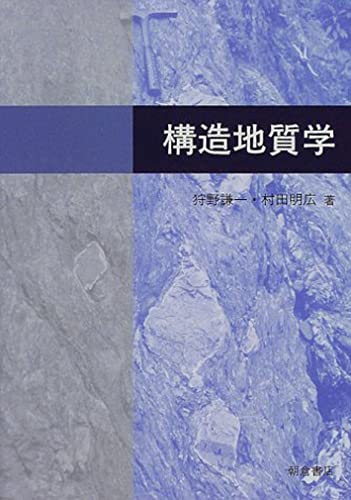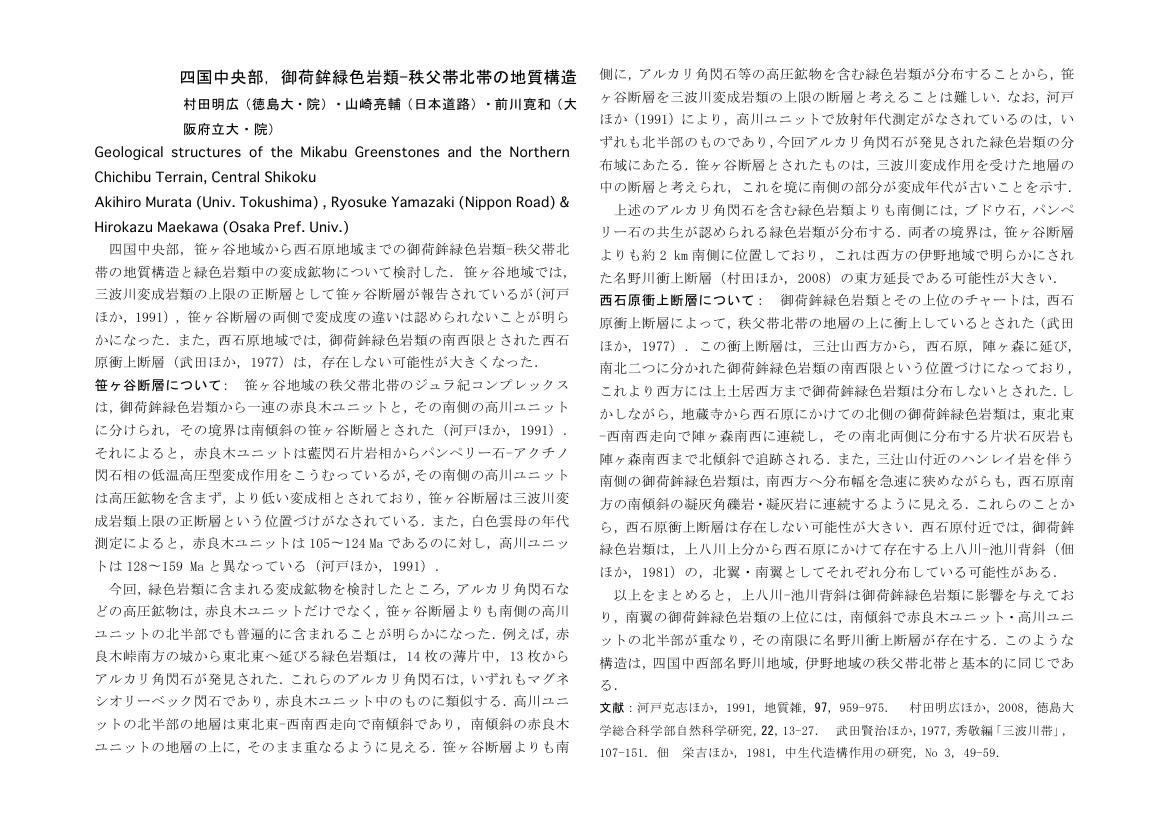1 0 0 0 構造地質学
- 著者
- 狩野謙一 村田明広著
- 出版者
- 朝倉書店
- 巻号頁・発行日
- 1998
1 0 0 0 OA 四国中央部,御荷鉾緑色岩類-秩父帯北帯の地質構造
- 著者
- 村田 明広 山崎 亮輔 前川 寛和
- 出版者
- 一般社団法人 日本地質学会
- 雑誌
- 日本地質学会学術大会講演要旨 第116年学術大会(2009岡山) (ISSN:13483935)
- 巻号頁・発行日
- pp.133, 2009 (Released:2010-03-31)
- 参考文献数
- 4
- 著者
- 岡田 博有 徳山 英一 CHAMLEY H. CHARVET J. FAURE M. LALLEMANT S. LEGGETT J RANGIN C. RENARD V. 飯山 敏道 PICHON LE X. 藤本 勝己 古田 俊夫 井田 喜明 加賀美 英雄 村田 明広 平 朝彦
- 出版者
- 一般社団法人 日本地質学会
- 雑誌
- 日本地質学会学術大会講演要旨 (ISSN:13483935)
- 巻号頁・発行日
- vol.1985, 1985
1 0 0 0 日本列島のテクトニクス四万十帯のデュープレックスと低角ナップ構造
- 著者
- 村田 明広
- 出版者
- 日本地質学会
- 雑誌
- 地質学論集 (ISSN:03858545)
- 巻号頁・発行日
- vol.50, pp.147-158, 1998-07-31
- 参考文献数
- 64
- 被引用文献数
- 5
九州の四万十帯には, 多くの低角な衝上断層が存在し, それらはデュープレックスや, 赤・緑色珪質泥岩の衝上シートを伴うことがある。九州の四万十帯では, 砂岩優勢の白亜系諸塚層群が, 塚原衝上断層によって, 千枚岩優勢の槙峰層群の上に衝上している。また, 槙峰層群と古第三系北川層群は, 延岡衝上断層によって, 古第三系日向層群の上に衝上している。延岡衝上断層及び塚原衝上断層は, 離れた位置にクリッペが存在することから, 全体としてほぼ水平で, 変位量はそれぞれ60 km, 30 kmに達する。四国では高角な安芸構造線, 中筋構造線が白亜系と古第三系を境しているが, 安芸構造線はもともと低角であり, 中筋構造線付近には低角な衝上断層が存在する可能性がある。九州で確認された低角なナップ構造は四国へも追跡され, 西南日本の四万十帯の基本構造である可能性がある。
1 0 0 0 OA 九州四万十帯日向層群の赤・緑色珪質泥岩とデュープレックス
- 著者
- 村田 明広
- 出版者
- Tokyo Geographical Society
- 雑誌
- 地学雑誌 (ISSN:0022135X)
- 巻号頁・発行日
- vol.104, no.1, pp.82-93, 1995-02-25 (Released:2010-11-18)
- 参考文献数
- 24
The Paleogene Hyuga Group of the Aradani Area in East Kyushu is regarded as an accretionary complex in the Shimanto Terrane. The Group was formerly inferred to form a melange including various sized blocks of sandstones, red and green siliceous mudstones, and basaltic volcanic rocks. The siliceous mudstones are not blocks in the melange, but occur as a low-angled thrust sheet of 40m thick.The Hyuga Group of the Aradani Area consists of four tectonic units;(1) lower chaotic unit, (2) siliceous mudstone unit, (3) mudstone unit, and (4) upper chaotic unit in ascending order. Each unit except for the siliceous mudstone unit forms a duplex structure, in which strata are imbricated, dipping 30° to 50° Each duplex is formed by mono-lithologic strata. The fundamental structure of the Paleogene Shimanto Terrane in Kyushu is characterized by low-angled nappe structures with stacked duplexes, in which duplexes lie one above the other, similarly to those of the Cretaceous Uchinohae Formation in South Kyushu.Original succession of the Hyuga Group is (1) basaltic volcanic rocks, (2) red and green siliceous mudstones of Middle Eocene, (3) black mudstones of Late Eocene, (4) sandstones and alternating beds of sandstone and mudstone of Late Eocene to Early Oligocene. Chaotic beds of melange facies originate from all above-mentioned strata. The siliceous mudstones, which are considered to be hemipelagic sediments, were subducted, and then formed a thrust sheet during underplating. The siliceous mudstones were probably situated in the decollement horizon, but did not flow as a lubricant layer.

